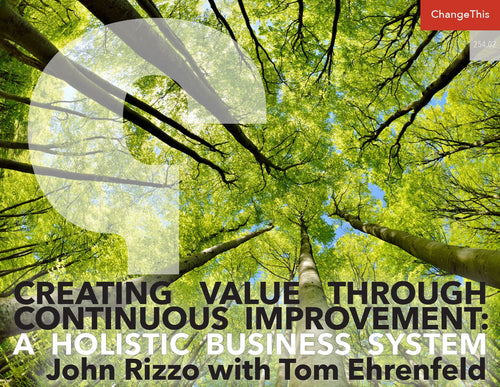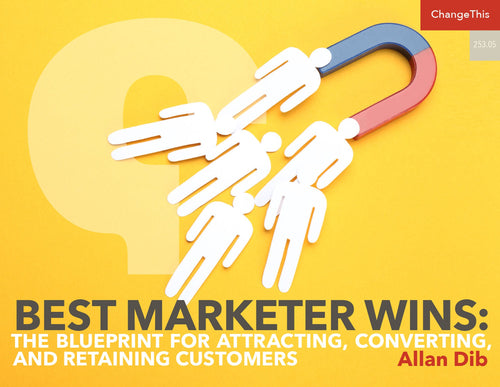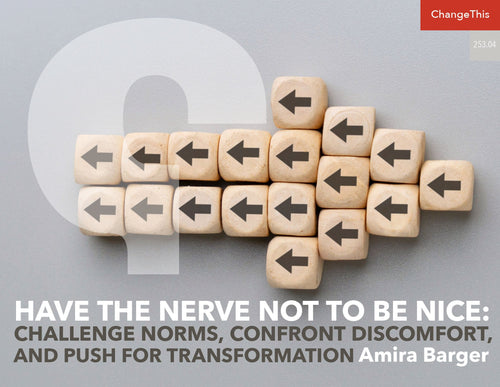Peace from the Inside Out
Ebola had killed 22 people in this tiny village–half of its population– and 80 more in nearby villages.
Over the course of 14 months, more than 14,000 people across the country had become sick, and close to 4,000 had died, a depth of loss people could explain only by reaching for comparisons to their civil war, two decades before.
And yet, on that hot July day, I also saw something else. At the edge of town, several dozen women gathered under the shade of large mango trees, many with infants on their backs or at their breasts, or small children playing near their feet. These women had walked to Kpoundu from 16 neighboring villages, an all-day trek for some, to discuss how they wanted to rebuild their communities after Ebola. Their conversation was as lively as their clothing, a glorious array of vivid colors and patterns. They bubbled over with generous words of affirmation and support for each other and for the ideas they shared, and their keen, attentive listening equally spoke volumes.
Delicious smells wafted as giant pots of rice and stew were prepared nearby for everyone, giving the event a festive, family feel. The noise grew louder and livelier as the women discussed and decided what projects they could take on together, and how they wanted to help their communities with the money they would make.
The Peace Mothers, as they came to call themselves, were bucking decades-long patterns in international aid. They refused to let labels like “poor,” “war-ravaged,” and “Eboladevastated” define them, and they rejected the status quo of humanitarian aid, which consigned them to wait for outsiders to come help them, if help ever came. Instead, the women organized to work together with what they already had for the good of their whole region, and judging from the animated participation, that invitation was awakening a powerful resource for their communal welfare.
They decided first to make and sell soap, and with that began a cooperative venture that is still growing. They have since built community centers with the money they made, given their children access to education, and prevented election violence. Their leaders now advise the district on peace and development and teach other districts how to strengthen community leadership.
But when outsiders look at Kpoundu, what do we see? Do we see the village primarily in terms of what has happened to it—the challenges its people have faced and the problems they have? Or do we see their resources and potential, the capacity that is present within the community, even if not yet visible to us, ready to be invited into action and expression?
The “we” I refer to here are predominantly Western, or Western-trained, international peace and development workers. Whatever our personal backgrounds, we are professionalized and acculturated into a system that divides those with needs from those with resources, assigning narrow, mutually exclusive definitions of both. The system labels communities dealing with violence, poverty, or weak governance as those having “needs,” while outsiders are those with the resources and expertise who come to help.
This deficit-based lens has a totalizing effect, making it more difficult to see, much less build on, the resources and potential already present within communities “in need.” This way of seeing supports a hierarchy built into the status quo: international experts are at the “top” of a system of knowledge, capacity, and resources, and local communities are at the bottom. The system we were trained to work in envisions aid as a one-directional flow from those with expertise and resources to those with needs, further entrenching the dichotomy.
The system also dichotomizes us as people. No matter where you are in the system, its logic insists that change happens “over there”—externally, often in faraway places, and always outside of oneself. Analytical skill and abstract thinking are privileged over the wisdom of lived experience and the power of the local—of care, of community, and of home. The system says that people can’t be trusted to solve their own problems; it reduces power to the capacity to control an outcome rather than the ability to liberate potential for good and to nourish mutual flourishing.
PEACE FROM THE INSIDE OUT
The story of Kpoundu’s Peace Mothers is not an isolated one; it happened as part of a systematic effort to build peace and development from the inside out, led by the Sierra Leonean nongovernmental organization Fambul Tok. Fifteen years ago, I began a partnership with John Caulker, a Sierra Leonean human rights advocate, and we started Fambul Tok (Krio for “family talk”) to create space for community healing, using indigenous restorative justice traditions, after the country’s 11-year civil war. Our animating purpose wasn’t to solve problems, to “save” communities, or even to meet needs, per se. Rather, we grounded our work in the intention of fulfilling potential. We sought to create space for people and communities—and, ultimately, the country—to identify, claim, and fulfill the potential we believed was always there, even after the devastation of war.
From that taproot, the tree of community healing burst forth and flourished. Over its first seven years, the Fambul Tok staff facilitated close to 250 tradition-based community bonfire ceremonies of truth-telling, apology, and forgiveness across six districts in Sierra Leone. The ceremonies involved more than 2,500 villages, and more than 4,500 people testified to more than 150,000 of their neighbors. We saw communities come together to face difficult truths and find their way forward. In the process, we saw individual and communal hearts made whole, and we saw this wholeness animate local agency and capacity. Communities came alive again as tens of thousands of people remembered their cultural and communal riches—riches still there after war—and drew upon those resources to reconcile and then lead their own recovery.
After every village reconciliation bonfire, the communities would designate a Peace Tree where they could gather to address new issues that arose. They formed Peace Mothers groups for women to continue to heal while working together for their communities. They rekindled the practice of community farming and used the proceeds to support local development. Individual healing and reanimated community went hand in hand.
We also saw how truth-telling and forgiveness in these communities, shared through a feature-length documentary I produced, opened imagination and conversation around the world—about the power of community and about what is possible when we look for, claim, and live into our wholeness, even in the middle of brokenness. These stories are still reaching and inspiring people today, sparking new ideas around restorative justice, forgiveness, and healing after atrocity.
Through it all, John and I (and our organizations) lived out a system of peace and development the way we felt that system should be. We eschewed the neocolonial grooves of the dominant humanitarian system and instead forged a path and process rooted in wholeness and mutuality, engaged over time with and through committed relationships and networks of care, from the most local to the national and international levels.
By the time Ebola struck, six years after our first reconciliation ceremony, we had seeded a network of strengthened communities across Sierra Leone. We confronted Ebola with the same approach that we had brought to confronting the past. When we encountered national and international responses that ignored or worked against community leadership, even while using language to the contrary, we responded by building and advocating for a connected national network of support instead—one that built bridges from local communities to national policy and carried community voices into the national response to Ebola in meaningful ways.
Based on our success at community-led reconciliation, we challenged prevailing global norms of crisis response and recovery that ignore local capacity and perpetuate colonial, outside-in dynamics. Step by step, we built a process for people and communities to lead their own recovery from Ebola and take charge of their ongoing development. We built connections from local communities to local government and then to policymakers at the national level, ensuring that Sierra Leonean citizens themselves led the process. As a result, people and communities could ask for what they needed and wanted, work together with their local leaders to achieve their vision, and build government connections to help that work be effective.
Seeing such vivid examples of success, the government of Sierra Leone decided to build a crucial national policy around this people-and community-centered approach, birthing the Wan Fambul National Framework for Inclusive Governance and Local Development. The government is now working to implement the Framework nationwide while building the inclusive national infrastructure to support and sustain it.
And Sierra Leone’s example is in turn inspiring a global network of policymakers and practitioners who are committed to creating space for people and communities to lead. Learning from Fambul Tok and the Framework’s success in Sierra Leone, they are now applying its lessons in Kenya, Guatemala, Afghanistan, Zimbabwe, Northern Ireland, the United States, and beyond.
When John and I first met in 2007, we couldn’t have imagined most of what was to come. We only knew how we would start: by asking the communities in Sierra Leone what they wanted. By grounding in and continuing to true to our larger common vision and deeper purpose, we grew the program in practice, over time. That common vision and purpose called forth and enabled the kind of collaborative, creative, generative weaving work we did in Sierra Leone.
Ultimately, it’s the vision of the larger whole—a healthy, regenerative, integral global community, held together by mutually liberatory relationships—that prompts, inspires, and undergirds my life’s work. The vision of the whole I hold in my imagination is both already and not yet: It is true and present as something to turn to, to learn from, and to lean into, even while we work to bring it into clearer, visible expression around us. This whole is not imposed from the outside. It is not fragmented or fragmenting, not mechanical or mechanistic. It is alive and organic, unfolding and growing from within—if we let it.
When the community members’ resources—their knowledge and desires and energy and talents—are recognized; when they are invited to lead; when outsiders come not merely as experts but as learners, eager to work in support of and alongside local leadership— when that happens, I have seen people in communities across Sierra Leone step forward with incredible energy and commitment and capacity.
This is an inside-out approach to peacebuilding and development—where the people “inside,” who are closest to the issues being addressed, lead in the work of addressing them, and those “outside” the locality hold the space for that leadership, inviting and accompanying and supporting its growth and development. Our experience in Sierra Leone showed me that this way of working is not the norm in peacebuilding and development, and that countering the ingrained patterns and expectations of decades of outside-in work requires a great deal of attention and energy, especially when working at scale, as we were. But the result is that communities experience the program as both grounded in their wisdom and explicitly designed to build from their wisdom in its implementation. And that brings about not only profound transformation but also change that lasts and continues to ripple out.
Locating ourselves—centering and grounding ourselves—within an inside-out system asks something of us. It changes our fundamental orientation to our work. It requires us to put down any focus on “changing the system,” as if the system were something separate from us, something “out there.” It requires us to leave behind the idea that we are building and creating something new; we must, instead, become something new. This might still involve building and creating, of course. But in the work of becoming, we are full participants; we are all in, not somewhere outside of and separate from the work we are doing or the system we are building. And there is no such thing as “finished,” really. The work of becoming is always ongoing; it requires embracing ongoing process and not mere product. That, in turn, means constantly moving into the unknown. We need to be willing to be surprised, to not be in control, to be part of a larger whole, to watch, to offer, to trust, to change.
To facilitate our becoming, we must let go of ideas of strong leadership centered around knowing the most and having all the answers, presumably in order to give them to everyone else. When we invite our imagination instead of just our intellect, our faith and trust instead of just our grit and grind, our alongside-ness instead of our above-ness— when we welcome those things, we open channels for new creation to spring forth. Fambul Tok taught me the generative power of not knowing, especially when we trust the larger wisdom, the wisdom of the whole—when we trust that we can access it, and when we make space for it.
I want to invite you, and everyone interested in leading positive social change, to imagine what you want to make space for. To listen for your own markers of a whole and healthy system, and then choose to do everything you can to inhabit that system now. That’s how to build peace from the inside out. To act as if the system were whole and healthy, and to work—to design programs, allocate budgets, hire and promote, partner and create—from there.
How can you do your own work fully from within that system, the system you believe should be, right now, right where you are? How can you ask for, build, and inhabit circles of support for that system, beginning at the most local, immediate, personal level—right where you are?
Adapted from The Answers Are There: Building Peace from the Inside Out.
Copyright © 2022 Libby Hoffman.
ABOUT THE AUTHOR
As the founder and president of Catalyst for Peace, Libby Hoffman creates space for those most impacted by violence and war to lead in building the peace and restoring social wholeness. For 15 years, she has focused her work in Sierra Leone, as co-founder, funder, and ongoing program partner of Fambul Tok (family talk), a postwar reconciliation program rooted in local culture and tradition. After the 2014 Ebola epidemic, she helped adapt the Fambul Tok approach into a national policy framework for people-and community-led planning and development; the framework has become a model for transformative partnerships between international donors, national governments, and civil society. Libby produced the award-winning documentary film Fambul Tok and coauthored a companion book of the same name.











































